更新时间:2024-08-22浏览量:54
A few days ago, the mandatory national standard of the "Safety Technical Specification for lithium-ion Batteries for electric Bicycles" (GB 43854-2024) organized by the Ministry of Industry and Information Technology has been issued by the State Administration of Market Supervision (State Standards Committee) and will be formally implemented on November 1, 2024.
As a mandatory national safety standard for lithium-ion batteries for electric bicycles, the "Technical Specifications" will effectively improve the essential safety level of lithium-ion batteries for electric bicycles by regulating the design, production and sales process of lithium-ion batteries for electric bicycles, reduce the incidence of safety accidents such as fire during use, and protect the personal health and life and property safety of consumers. Promote the healthy and orderly development of the electric bicycle industry.
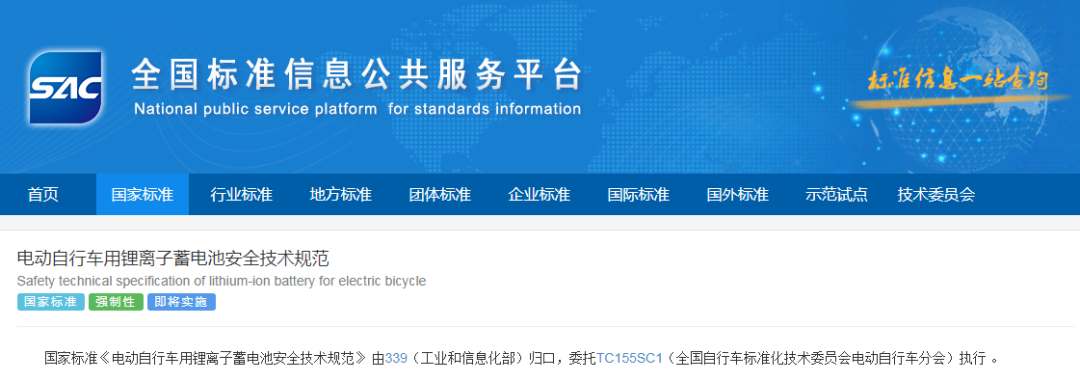

【Main content】
The "Safety Technical Specification for lithium-ion Batteries for electric Bicycles" not only specifies the safety requirements for lithium-ion batteries for electric bicycles, Also from the electrical safety (overcharge, overdischarge, external short circuit, temperature protection, etc.), mechanical safety (extrusion, acceleration impact, vibration, etc.), environmental safety (low pressure, temperature cycle, immersion, etc.), thermal diffusion, mutual recognition of collaborative charging, data acquisition, marking and other seven aspects set the battery product safety access threshold, improve the essential safety level of lithium-ion batteries.
6 single battery test items: including overcharge, overdischarge, external short circuit, heat abuse, acupuncture, marking.
22 battery pack test items: including electrostatic discharge, overdischarge, overcharge, temperature protection, external short circuit, mutual recognition co-charge, data acquisition, insulation resistance, extrusion, acceleration shock, vibration, free drop, lift strength, flame retardant, low pressure, overdischarge, temperature cycle, water immersion, salt spray, humid heat cycle, thermal diffusion, marking.
Focus on test items:
1. Single battery overcharge (1.5 times) test and acupuncture test can effectively screen the safety of the battery.
2. The battery pack should have a unique code, and the code identification needs to be made of high temperature resistant (950 ° C) material, even if a fire can be traced.
3. The overcharge, external short circuit, and overcurrent discharge tests of the battery pack should be carried out under normal working conditions and under the condition of single failure of the protection component, so the battery pack may need to adopt a dual protection design to meet the requirements.
4. Battery packs need to have mutual recognition and cooperative charging function to reduce the risk of battery pack charging caused by mismatching charging devices.
5. In the process of charging and discharging, the battery voltage, battery voltage/temperature/current should be collected in real time, which requires the battery pack to be equipped with a management system (intelligent "brain") for real-time monitoring.
6. Manufacturers should clearly mark the "safe service life" on the battery pack to remind users to eliminate old batteries in time, because with the increase in the service life of lithium-ion batteries, their safety risks will gradually amplify.
7. The battery pack housing, printed circuit board, wire should use flame retardant materials to reduce the flame spread rate after a fire.
8. The thermal diffusion test of a battery pack requires that when a single battery in a battery pack fires, it must not quickly spread to the entire battery pack.
Scope of application: It is suitable for lithium-ion batteries for electric bicycles with the maximum output voltage not exceeding 60V specified in the "Safety Technical Specification for Electric Bicycles" (GB 17761).
Point Stone Instrument provides battery safety performance test solutions
"Technical Specifications" is a mandatory national standard, after the implementation of the standard, the domestic sales of electric bicycles with lithium-ion batteries must meet its requirements.
As a battery test system solution provider, Dianshi Instrument has established stable cooperative relations with battery manufacturers, testing institutions, universities and research institutes, and has independently developed and successfully delivered a number of battery comprehensive/single performance test equipment (which can meet the comprehensive performance test needs of scientific research grade batteries). It provides a convenient, reliable and efficient experimental platform for the safety performance test of lithium batteries.
Part 1 Battery comprehensive performance test equipment
01 Battery comprehensive performance experiment room

The battery comprehensive performance laboratory can realize the coupling of a variety of environmental factors (temperature, pressure, atmosphere, etc.), and carry out a variety of tests on the battery (acupuncture, extrusion, overcharge, overdischarge, short circuit, temperature cycle, ignition, fire extinguishing), which is used for the comprehensive performance test of single batteries and small battery modules.
02 Walk-in integrated laboratory module
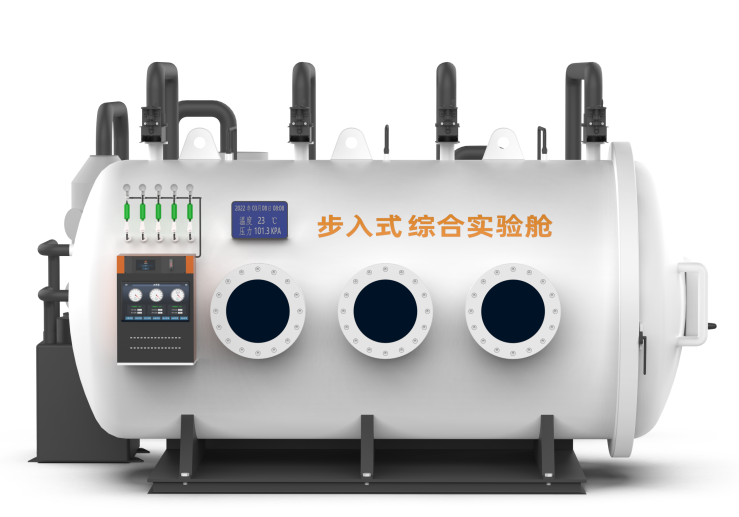
The walk-in integrated laboratory room can build a composite experimental environment (high temperature, low temperature, high altitude, salt spray) for temperature cycle experiments, corrosion resistance experiments, reliability experiments of large parts, and thermal runaway experiments of batteries.
Part 2 Battery single performance test equipment
03 Battery overcharge and overdischarge test system
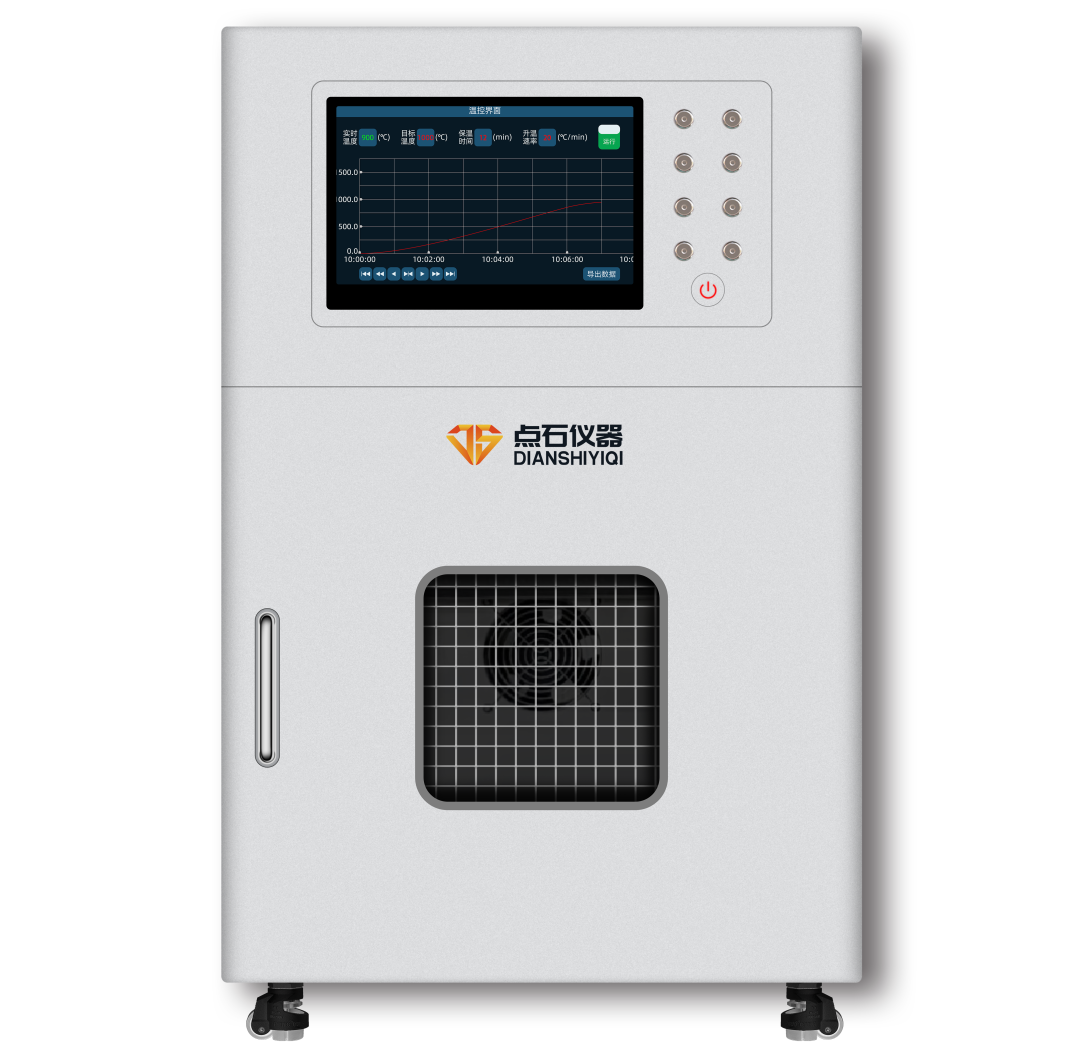
Battery overcharge and overdischarge test system is suitable for battery manufacturers and research institutions to charge and discharge test single power battery, combined battery, battery pack, lead-acid battery, nickel-metal hydride/nickel-chromium combined battery, etc.
04 Battery charging and discharging aging meter
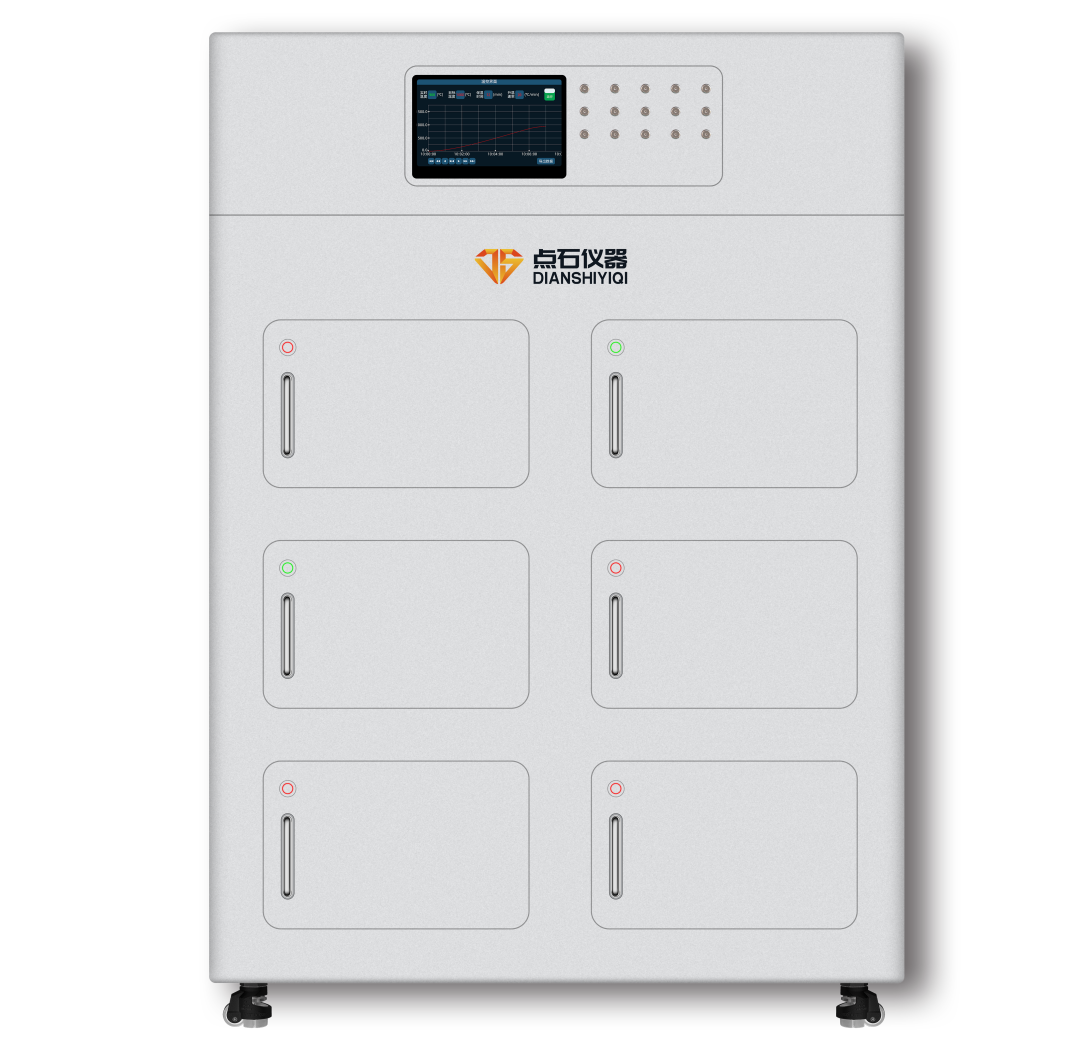
The battery charge and discharge aging meter is suitable for scientific research units and battery manufacturers to test the battery charge and discharge time, test the charging speed of different voltages and currents, and test the aging degree of the battery after multiple charges.
05 Battery heat abuse testing machine

The battery heat abuse testing machine can simulate the battery placed in the natural convection or forced ventilation of the high temperature box scene, heating up to the set test temperature at a certain heating rate and maintain a certain time, mainly used for battery safety performance detection in the furnace heat test, heating test, etc.
06 Temperature-controlled battery external short-circuit testing machine

The temperature-controlled battery external short-circuit testing machine is suitable for testing whether the battery will explode and catch fire in the case of a certain resistance short-circuit, and at the same time, the maximum current of the short-circuit is displayed through the relevant instrument.
07 Battery environmental test chamber

The battery environmental test chamber is suitable for all kinds of batteries, materials, electronic and electrical semi-finished products, finished products, etc. to carry out reliability tests in the environment of constant high and low temperature, gradual change, mutation, alternating, wet and heat test, and can be used with the charge and discharge cabinet for high and low temperature charge and discharge test of experimental battery cells.
08 Battery combustion test chamber

The battery combustion test chamber is suitable for laboratories, battery enterprises, scientific research institutions, etc., to carry out battery combustion experiments under extreme conditions of over charge and over discharge of a single cell or battery module, and can record the smoke concentration and heat value of the battery after combustion.
09 Battery needle extrusion testing machine
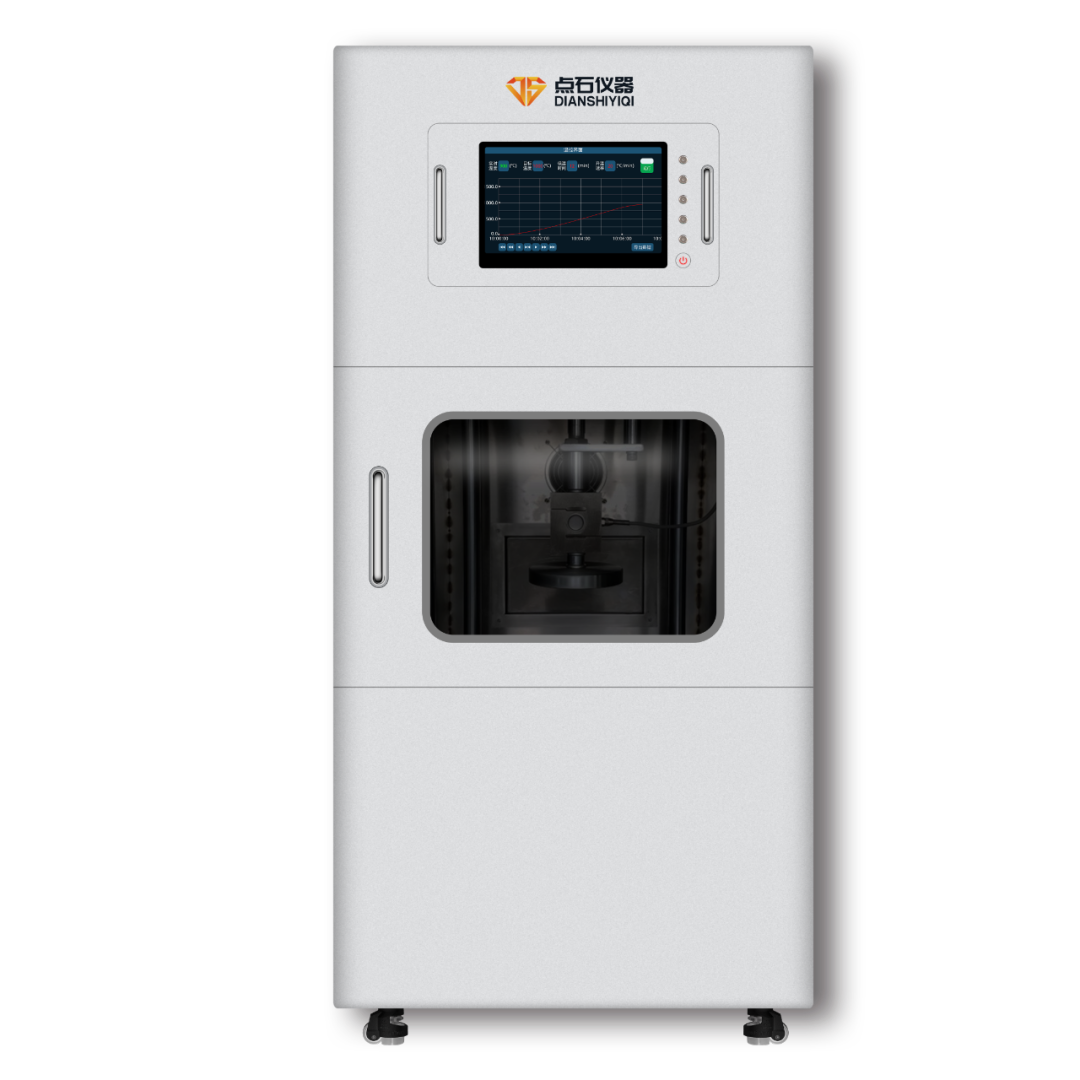 The battery needle extrusion testing machine is suitable for simulating the situation of various kinds of batteries being squeezed and punctured during use, transportation and storage. The battery shall not explode or catch fire.
The battery needle extrusion testing machine is suitable for simulating the situation of various kinds of batteries being squeezed and punctured during use, transportation and storage. The battery shall not explode or catch fire.
10 Battery drop tester

The battery drop tester is suitable for testing the damage of the sample in the fall test, and evaluating the impact strength of the sample during transportation and handling.
11 Battery falling ball impact testing machine
 The battery falling ball impact testing machine is suitable for testing the energy required by the battery to produce cracks under the falling ball impact, so as to determine the impact resistance of the battery and determine the condition of the battery after damage.
The battery falling ball impact testing machine is suitable for testing the energy required by the battery to produce cracks under the falling ball impact, so as to determine the impact resistance of the battery and determine the condition of the battery after damage.